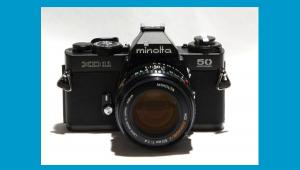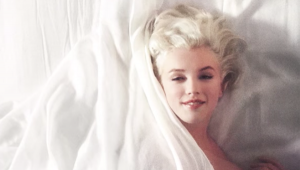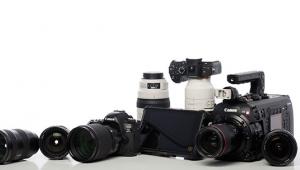How Jonathan Bachman’s Protest Photo Went Viral & Became One of the Most Memorable Images of 2016

Experts estimate that over one trillion photographs are taken each year. Only a tiny fraction of them rise to the level of greatness and far fewer merit being called “iconic.” To capture an extraordinary photograph all the necessary elements have to come together—at least for an instant—and the photographer has to be in just the right place to record it.
Jonathan Bachman’s remarkable photograph of a lone woman the instant before her arrest for obstructing traffic during protests in Baton Rouge, Louisiana, is a case in point. The protest was sparked by the killing of Alton Sterling by Baton Rouge police a few days earlier last July.
Bachman’s photo circled the globe within hours after he uploaded it to Reuters, who had assigned him to cover the protests. The photo captures an individual’s peaceful civil disobedience while facing a vastly superior force.
Famous Predecessor
The image has been compared to the “Tank Man” photo taken in Tiananmen Square during the 1989 Beijing uprising. But the “Tank Man” stood in front of the long line of tanks for some time and many photographers captured the image. While an online search shows other photos of the same woman’s arrest, only Bachman’s combines the elements in a way that projects a larger theme—the choice of an individual to stand up in protest over a series of tragic events that have roiled an entire nation.
The photo was the centerpiece for a conference hosted by Reuters at New York’s International Center for Photography (ICP) late last year, titled “Iconic in an Instant? One Trillion Images.” Dozens of journalists and media professionals explored various aspects of photojournalism in the era when citizens with their smartphones connected to social media often get the story out ahead of news organizations and the media’s photo editors. The highlight of the day was the presentation by Bachman who was joined by the subject of the photo, Ieshia Evans, whom he met for the first time at the conference.
Here’s how the pieces came together to make an image that many critics consider iconic.

The Backstory
Bachman (jonathanbachmanphotography.com), a freelancer who works for Getty and AP as well as Reuters, made the 90-mile drive from his New Orleans home that Saturday morning, his second trip of the week. In the midst of the protest, he heard a voice say something about getting arrested. He turned, and saw the impending arrest in front of his camera. With the reflexes of a sports photographer (working with a camera with a nearly full card), he captured the exact instant when the opposing forces met.
Bachman’s position is perfect—a low angle, perpendicular to the subjects. Evans, wearing a light sundress and flats, is completely at ease, comfortably resting on her heels, while two police approach in a defensive crouch, literally armored from head to toe, looking almost like aliens. In the background we see a few citizens observing the scene in the humid warmth of a Baton Rouge summer day. On the left looms an overwhelming backup force. Bachman noted that Evans was quickly and peacefully taken into custody.
Evans, a licensed practical nurse, made a spur-of-the-moment decision to travel from Pennsylvania to Baton Rouge to join the protest after the story of Sterling’s death made national headlines. She did not see Bachman take the photograph but by the time she was released from the East Baton Rouge Parish Jail in the early hours of Sunday morning, the cell phone that’s visible in her right hand in the photo was filled with messages from friends who had already recognized her in the picture. The powerful photo had quickly gone viral, pinging across cyberspace and onto just about every news site and social media channel out there.
Who Is She?
But the rest of the world wanted to know—who is this woman? In this networked era, her identity was quickly established and over the next few days many follow-up articles were written about Evans. She explained she felt compelled to join the protests out of concern for her young son.
Fatal encounters between police and citizens have become a recurring story. Combined with the growing protests and increased violence against police officers, the frayed relationship between American communities and their police has become a story that has captured the world’s attention.
It’s this context that makes Bachman’s photo iconic. Shortly after it was taken, writing a blog post about the photo for The Atlantic, Yoni Appelbaum provided a succinct definition of an iconic image: “Once seen, it cannot be unseen.” Bachman’s photo meets that test.
- Log in or register to post comments

















































